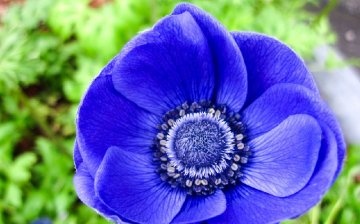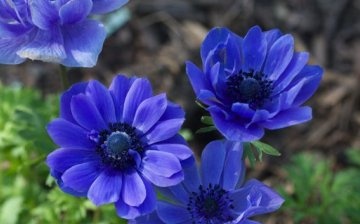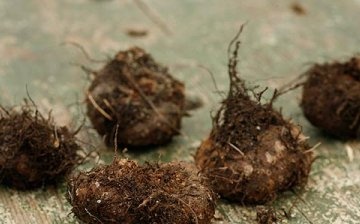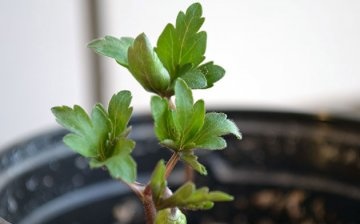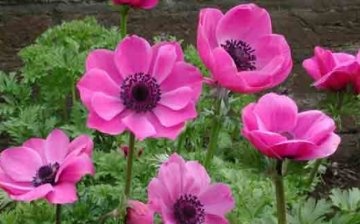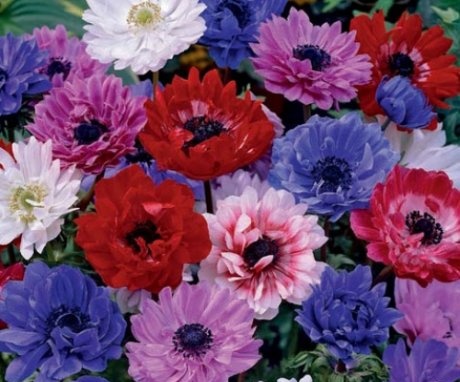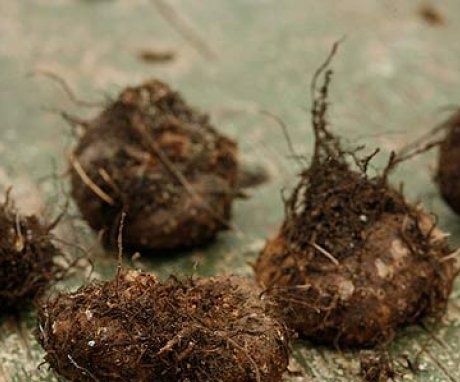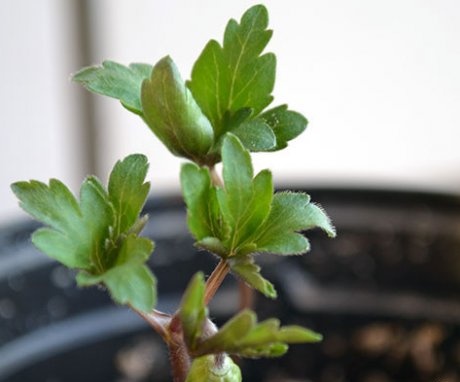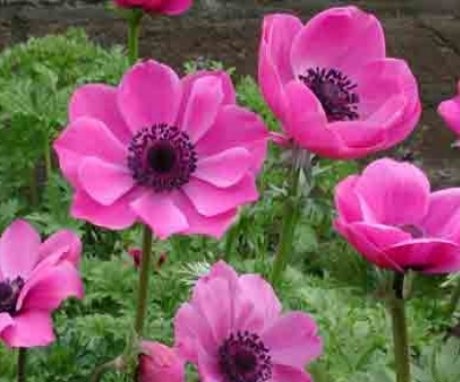Crown anemone and other types of anemones: growing conditions, care and methods of reproduction
Anemone has a large color variety of petals. Even beginners in gardening can grow and propagate it, the main thing is to take into account some features, such as the light regime and the choice of soil.
Content:
- What is anemone
- Types of anemones: crown anemone
- Preparing tubers for planting
- Anemone care
- Reproduction methods
What is anemone
The anemone flower is popularly called "anemone". In translation, anemone is translated as the daughter of the winds, who came across these flowers, they know that even a weak wind makes the petals flutter.
The buttercup anemone is a perennial herb that grows in temperate areas. Prefers flat terrain or mountains. Botanists have counted 160 types of anemones, they all differ in their appearance and bloom at different periods.
Each type of anemones has its own biological characteristics, therefore, it is necessary to grow and provide care taking them into account.
For example, all anemones are divided into two large groups, some have rhizomes, others have tubers. It will be easier for amateur gardeners to deal with the former.
To grow an anemone on your own, you need to remember that it requires a large amount of moisture, you need to correctly choose fertilizers for feeding, in winter she needs a reliable shelter, but there is nothing difficult in breeding anemones.
Flower description:
- Plant height can range from 10 cm to 1 m.
- The leaves on the anemone are separate or finger-dissected.
- Flowers can be single or gathered in umbrella inflorescences.
- The number of petals on a flower can be from 5 to 20, the colors are very diverse: white, pink, purple, red, light blue, yellow, blue.
Flowering of some species begins in early spring, some bloom in summer, others in autumn. Depending on this, the types of anemones are divided into types: spring and autumn.
Types of anemones: crown anemone
There are two main groups into which anemones are divided:
- Spring.
- Autumn (summer).
Spring species are more fragile and graceful, their color is softer and more delicate, pastel colors prevail: pink, blue, lilac, cream. Terry varieties were obtained from some species. Their flowering cycle is short, it begins in May, and ends by July, only some species can survive the leaves until autumn.
Flowers in spring species are solitary.
Further, the species are divided according to the type of rhizome, in buttercup anemones and anemones of oak trees, a jointed rhizome, in anemones tender tuberous.
Spring types include:
- Altai.
- Perm.
- Blue.
- Udinskaya.
- Buttercup.
- Ural.
- Smooth.
- Dubravnaya.
Autumn species are larger, the root system is well developed. These include anemone:
- Japanese.
- Hybrid.
- Crowned.
The flowering period begins in late summer and ends in late autumn. Anemone hybrid is famous for varieties with pink flowers, white, dark purple, on one flower two shades can be combined at once, smoothly turning into one another.
Japanese anemone has large burgundy flowers with a double surface.There are varieties with cream petals and bright pink.
The crown anemone differs from all species in that it blooms twice: in early summer and in mid-autumn. Its peduncles are tall, they can reach one and a half meters in height. The shades of the petals are varied, depending on the variety.
Gardeners grow four varieties of crown anemones:
- "De Caen".
- "Mr. Foker".
- "Don Juan".
- "Lord Jim".
The crown anemone came to us from the Mediterranean, among all the anemones it is the most beautiful species. The flowers are medium in size, each about 8 cm in diameter. The colors can be blue, pink, lilac, lilac.
Anemone crown loves light areas, but also tolerates partial shade well. The soil should be rich, preferably drained, moist, and breathable.
Preparing tubers for planting
Attention must be paid to properly planting and storing anemone tubers.
Before planting their soil, you need to prepare them:
- Before planting, the tubers are soakedbut the main point is that they do not tolerate direct contact with water. The tubers absorb water very quickly and can rot because of this.
- Water at room temperature is poured into a flat container, a drop of zircon or epin is added there. Aloe juice, Ribav-Extra, is used as biological simulators of root formation.
- In such a mixture, you need to moisten gauze, squeeze well and wrap the anemones tubers in it, in this state, wrap it in polyethylene so that the moisture does not evaporate. Leave the tubers to get wet for 5 hours.
- After soaking, the tubers can be moved for rooting. For this, a shallow container is taken, filled with soil with sand or clean sand, it is important that air and moisture penetrate well.
- The tubers are laid out on top, not buried. Further, the technology is the same as when growing seeds for seedlings, the container with the bulb is covered with polyethylene or glass and moved to a cool place.
- The earth must be moist all the time. From time to time you need to lift the glass / film and moisten the soil.
- After a week and a half, the first growth points and roots should appear. After that, it will become clear which side plant tubers to a permanent place. The sprouts should look up, they are planted at two tuber heights.
After a small sprout appears, the bulb can be moved to a pot, where it will continue to germinate.
If all the technology has been followed, then 100% of the tubers give flowers. Growth points may not appear immediately, do not panic, some tubers require more time, more moisture and more coolness. When tubers are grown in pots, they should be kept indoors where the temperature does not rise above +12 degrees. If they are hot, then there is a risk that the anemone will be weak or rot.
Only after the emergence of strong sprouts can the temperature rise.
After planting in the garden, the first days the anemone is covered from the open sun so that it does not burn the leaves. It is possible not to grow tubers indoors, but immediately place them outside. Then they are deepened by no more than 5 cm.
Anemone care
When the flowers were just planted, they are mulched with loose peat or humus, it is preferable to do this apple tree foliage, linden trees, maple or oak.
Mulch acts as a forest floor that protects the anemone in the wild. If you plan to cut the anemone for bouquets, then fertilizer is applied only during the flowering period.
Tips for caring for an anemone:
- For feeding, both complex and mineral fertilizers are used. The plant will respond well to periodic loosening of the soil, weeding out.
- It is especially difficult for hybrid species to tolerate winter, so they need special shelter. But other species are not ignored in cold weather. The flower is covered with compost or peat with a layer of 15 centimeters, before that, the leaves and root stems are removed with a sharp knife.
- The bulbs can also be stored at home.The technology coincides with the storage of gladioli bulbs.
- If the season is dry, then the anemone needs periodic watering, if precipitation is present, then additional moisture can be added only during the flowering period.
- There are no other special indications for growing anemones, it will develop and bloom without human help.
- Although the stem of an anemone can grow to a great height, it does not need to be tied up. The main thing is only to choose the right place for planting, it should be open sun or partial shade, it is better to choose the second.
Diseases and pests of the flower:
- Anemone can be affected by some pests.Very often it encounters white rot or powdery mildew... The disease can also develop due to an excess of moisture in the soil. Then miner flies appear, which you can get rid of with the help of "Fufanon".
- Slightly less common are nematodes. It is difficult to get rid of them, therefore, so that the parasite does not spread to the entire flower bed, the plant is urgently burned, and the soil is disinfected.
For the winter, the bulbs can be dug up and stored at home. They are dug out in the fall, before the onset of cold weather. This period usually falls on the end of September-October. Then they are dried well and placed for storage in a dark place. The part of the flower that was underground is cut off.
If it is possible to store the bulbs in the cellar, then in this case they will not lose their moisture, which means they will germinate better next year.
Reproduction methods
Reproduction of anemones is carried out in several ways:
- By dividing the bush.
- Parts of rhizomes.
- Parts of tubers.
- Seeds.
If you need to propagate a hybrid form, then the vegetative method is used. This is done simply: the rhizome of the bush is divided into several parts, each young sprout should have adventitious buds, so they are planted in a separate place.
The bush divides in early March, when the shoots have not begun to actively grow.
In order to convey varietal characteristics, propagation is carried out by seeds:
- Only fresh seeds are used, which are sown in late autumn in boxes.
- Some gardeners germinate seeds in the spring, for this you need to wait for a stable warm temperature, above 25 degrees. The first seedlings will appear in about a month, after which they can be dived.
- Only the next year can the young anemone be moved to a permanent place in the garden. The first flowering will come no earlier than three years later. When growing anemones from seeds, you can only get plants with a pale color. The soil for the seeds is chosen loose and fertile, the boxes are buried in the ground, in partial shade. This is to prevent the soil from drying out.
- If climatic and other conditions coincide with natural, then the anemone can arrange self-seeding.
- After about 7 years, natural reproduction occurs, when the lateral shoots are isolated, and the original rhizome dies off. Every year this way it grows by 3-4 centimeters.
Seed germination is low, the maximum amount is 25%, but they develop quickly.
If the rhizome is long and pronounced, then its anemone propagated by segments... After the end of the flowering period, the rhizome does not disintegrate several segments, every year a new one appears, each has adventitious roots and renewal buds.
When dividing a tuber, each segment from a tuber should have one, two, and preferably three buds. Reproduction takes place in July-August, that is, during the dormant period.
There is nothing difficult in growing anemones. By grouping different species and varieties in one composition, you can make the garden bright and fabulous.
More information can be found in the video.



